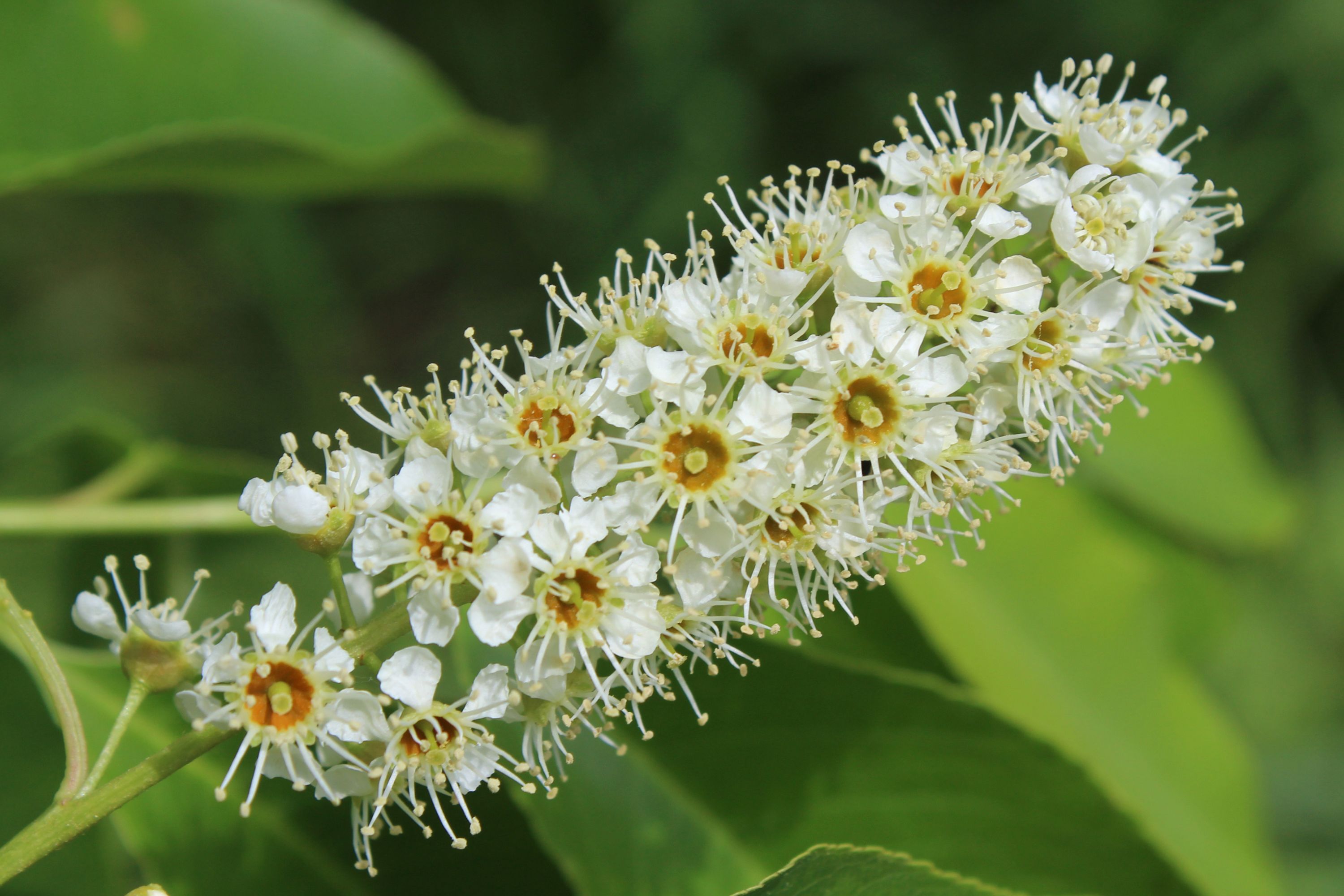Black cherry
(Prunus serotina)

Description
Prunus serotina, commonly known as black cherry or wild cherry, is a deciduous tree that belongs to the rose family, Rosaceae. This species is native to North America and is widely distributed throughout the eastern United States and southern Canada. The black cherry tree is an important timber species, as well as a popular ornamental plant. Description Black cherry is a medium to large-sized tree, reaching up to 80 feet (24 meters) in height and 3 feet (1 meter) in diameter. It has a straight trunk and a narrow, pyramidal crown. The bark of mature trees is smooth, reddish-brown to black, and has distinctive horizontal, raised lenticels. Younger trees have a smooth, grayish-brown bark that becomes rough and scaly with age. The leaves are simple, alternate, and elliptical with serrated edges. They are dark green in color and can grow up to 5 inches (13 cm) long. In the fall, the leaves turn yellow to reddish-orange. The flowers are small, white, and clustered in groups of 5 to 15. They bloom in the spring and are followed by small, red to black, sweet and juicy fruit, which ripen in late summer to early fall. Distribution and Habitat Black cherry is native to eastern North America, from southern Canada to Florida and west to Texas. It is commonly found in forests, woodlands, and along the edges of fields and roads. The tree is adaptable to a wide range of soil types, but prefers well-drained, moist, and fertile soils. It is also tolerant of drought and moderately tolerant of flooding. Ecology and Uses Black cherry is an important tree species in eastern North American forests, providing food and habitat for a variety of wildlife species. The fruit is eaten by birds, including the cedar waxwing, blue jay, and robins, as well as by mammals such as black bears, raccoons, and foxes. The leaves are browsed by deer and the bark is eaten by beavers. Black cherry is also an important timber species, valued for its hard, strong, and durable wood, which is reddish-brown in color and has a fine, uniform texture. It is commonly used for furniture, cabinetry, flooring, and decorative veneers. The tree also has medicinal properties, with the bark and leaves traditionally used by Native Americans for various ailments, including coughs, colds, and fever. Black cherry bark has also been used to make a natural cough syrup and flavoring for liqueurs. Cultivation and Propagation Black cherry can be propagated from seed, which should be stratified (chilled) before planting to increase germination rates. The seedlings grow rapidly and can reach up to 12 inches (30 cm) in height in their first year. The tree can also be propagated by root cuttings, although this method is less common. Black cherry is a popular ornamental tree, valued for its showy spring flowers, attractive bark, and colorful fall foliage. It is also a valuable tree for wildlife habitat, providing food and cover for a variety of species. Potential Problems Black cherry can be susceptible to a variety of pests and diseases, including borers, tent caterpillars, and black knot. The tree can also be prone to storm damage, particularly in areas with high winds. Conclusion Prunus serotina, or black cherry, is a valuable tree species in eastern North American forests, providing food and habitat for a variety of wildlife species, as well as valuable timber and medicinal properties. It is a popular ornamental tree and can be propagated from seed or root cuttings.
Taxonomic tree:







